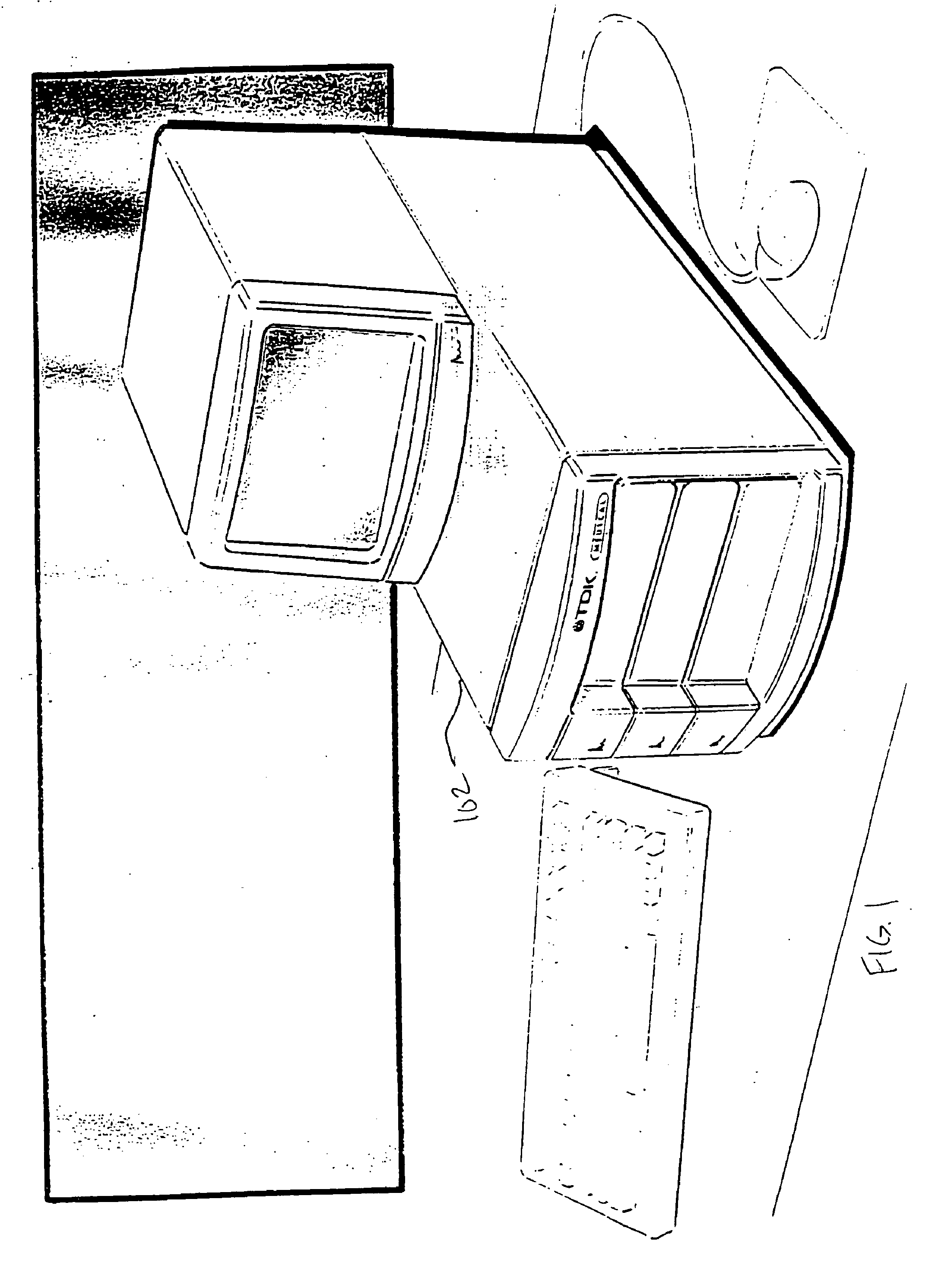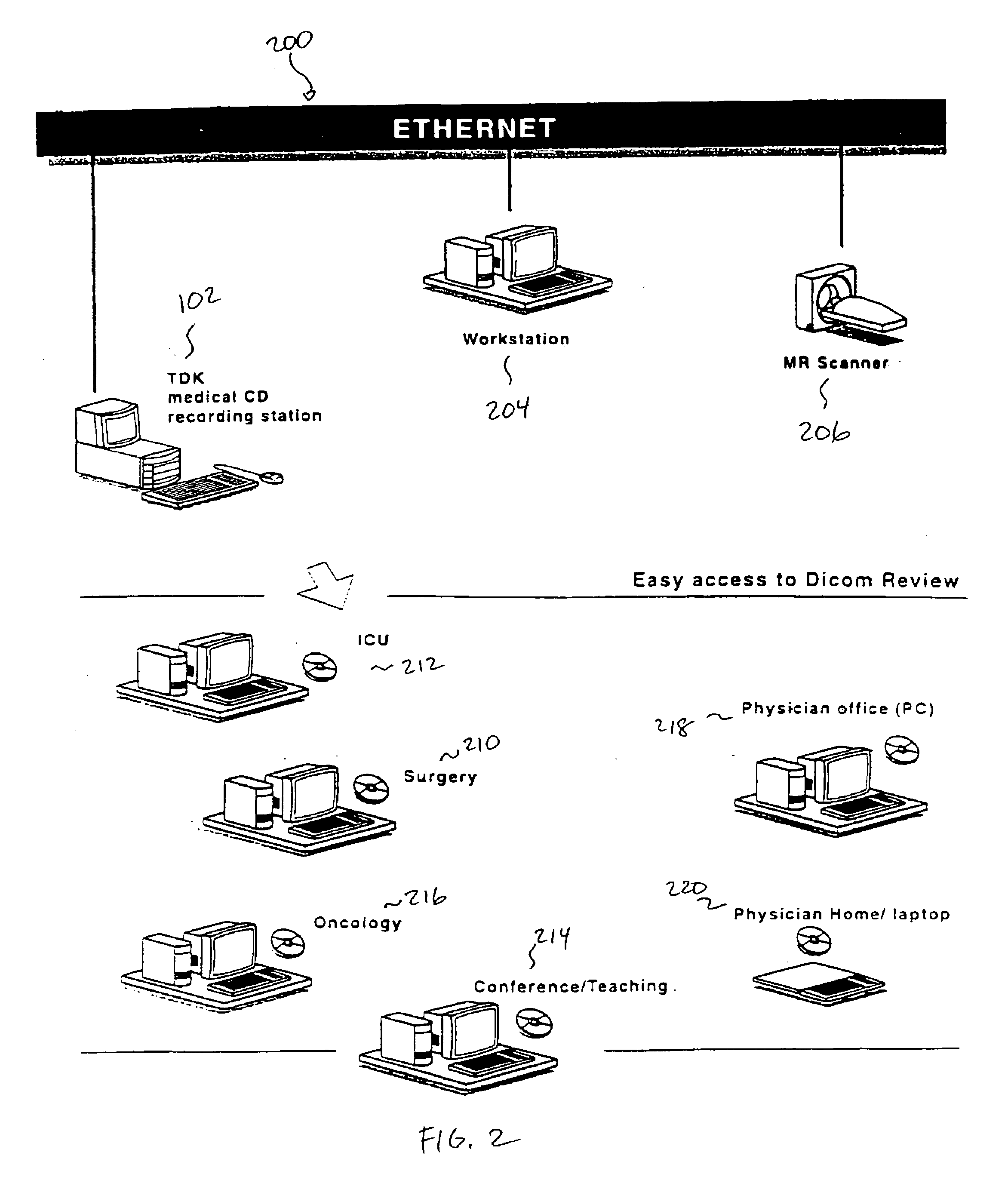Removable media recording station for the medical industry
a technology of medical imaging and recording station, applied in tomography, applications, instruments, etc., can solve the problems of wide connectivity, impede duplication and transport, and are currently unavailable in the field of wide connectivity, so as to improve access and distribution of medical images, and achieve cost-effective effects
- Summary
- Abstract
- Description
- Claims
- Application Information
AI Technical Summary
Benefits of technology
Problems solved by technology
Method used
Image
Examples
Embodiment Construction
[0024]Reference will now be made in detail to the preferred embodiments of the present invention, examples of which are illustrated in the accompanying drawings.
[0025]Patient diagnosis and care has been greatly aided by the advancements in medical imaging technology. Medical images created by diagnostic modalities such as X-ray, CT, MR, Nuclear Medicine, Ultrasound, Angiography, Mammography, Positron Emission Tomography, Computed Radiography, etc. are routinely used by physicians. Maintaining efficient access to images created by the various modalities is of critical concern to today's physician. In particular, medical image review must not be bound by the physical limitations of traditional viewing media such as film or nonstandard media formats such as MO and DLT.
[0026]The medical industry recognizes the need to modernize image viewing capabilities and has begun to install small, low-cost, PC-based review stations. These low cost review stations can be configured with specialized ...
PUM
 Login to View More
Login to View More Abstract
Description
Claims
Application Information
 Login to View More
Login to View More - R&D
- Intellectual Property
- Life Sciences
- Materials
- Tech Scout
- Unparalleled Data Quality
- Higher Quality Content
- 60% Fewer Hallucinations
Browse by: Latest US Patents, China's latest patents, Technical Efficacy Thesaurus, Application Domain, Technology Topic, Popular Technical Reports.
© 2025 PatSnap. All rights reserved.Legal|Privacy policy|Modern Slavery Act Transparency Statement|Sitemap|About US| Contact US: help@patsnap.com



